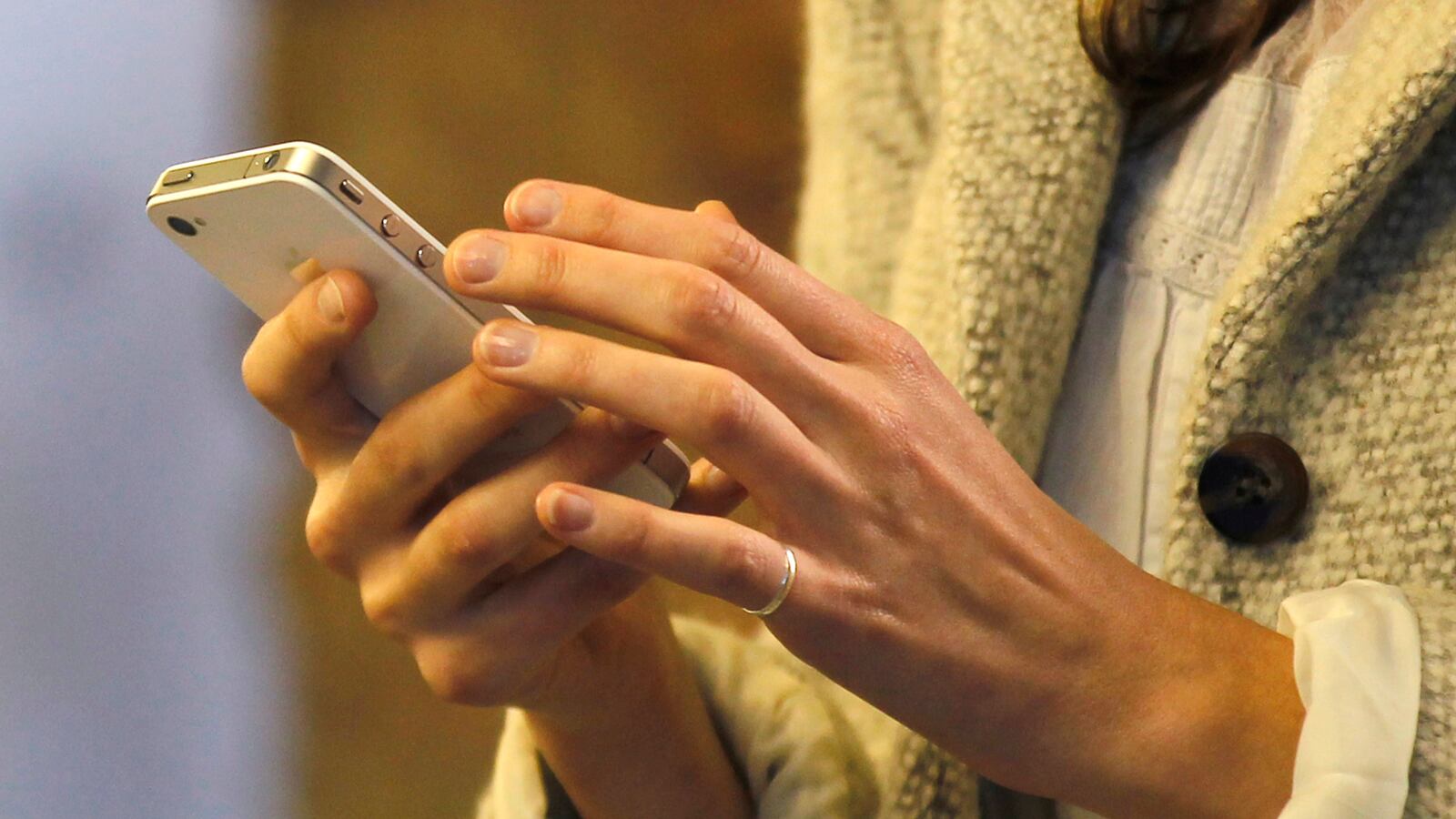My poor smartphone is under fire from all corners these days. The latest salvo comes from Gershom Gorenberg, responding to Jonathan Safran Foer, with whom he largely agrees. These two men have joined the ranks of those lamenting our increased reliance on our electronic devices. Foer argues that our digital lives are giving way to atomization and deep societal alienation. “My daily use of technological communication,” he writes, “has been shaping me into someone more likely to forget others.”
Gorenberg sees links between Foer’s arguments and the philosophy of Emmanuel Levinas, who calls for the importance of gazing into the face of the Other. And as a Shabbat-observant Jew, Gorenberg points out, he himself is grateful to have “a day in the week when everyone has a face.”

Remembering others is essential for a healthy community, certainly. And faces are indeed wonderful, especially when their proximity enables spontaneous discovery and intimacy between our singular selves and the many Others whom we can only struggle to know, understand, and help.But these critics of digital communication are missing three important points.
The first is that there is little evidence to suggest (to me, anyway) that in-person relationships tend to be any less superficial than electronic ones. There are countless people with whom we all interact regularly, face to face, but in a way that nonetheless lacks intimacy. And there are many with whom our primary interactions are digital—by dint of distance or simply life’s rhythms—and with whom the conversations are deep, challenging, warm and stimulating.
We all play roles on the stage of day-to-day life, as sociologists have long acknowledged. We all have backstage selves and selves that we cultivate and present to the outside world. Rarely are those selves emotionally naked, and frequently they aren’t even socially authentic. Presenting in the flesh is certainly no antidote to these human foibles.
The second point relates to Gorenberg’s point about Shabbat. If Shabbat is intended as a time not only to desist from melacha (work, or craftsmanship), it is also intended as a day devoted to reading and reflection. The written word—in the form of the siddur (prayer book), the Torah scroll, and many other Jewish texts that traditionally form the centerpiece of a Shabbat afternoon study session—all rely on something very specific to these maligned digital devices. I’m thinking, of course, of the humble written word.
Digital devices are taboo on Shabbat for a rather prosaic reason: because they rely on electricity (which is prohibited because it is akin to “kindling fire” or “applying finishing touches to an object,” in this case, closing a circuit), not because of their intended function, which is textual engagement. Were digital devices simply stacks of typewritten papers bound by leather that we carried with us obsessively, instead of bits of glass and metal encased in silicone that we are never without, they would, no doubt, be central to the Shabbat experience. To wit: the Reform movement’s Central Conference for American Rabbis, not bound by the same electricity prohibitions as is Gorenberg’s more traditional Judaic practice, has issued an iPad app for the Friday night Shabbat service.
Which brings me to my third point. When we’re at our best, bringing our own innate intelligence to rise to the level of that in our mechanized smartphones, we are at root using our digital devices to hone the craft of reading and writing.
We are sitting on a subway surrounded by rolls of newsprint from every city on earth, sharing in opinion and facts and figures and triumph and tragedy.
We are sprawled on our sofa thumbing through biographies, manuals, maps, textbooks, encyclopedias, histories, novels, plays and poems from every library we one day hoped to visit when we were young.
We are perched on a park bench, surrounded by inkwells and parchment, penning critical, thoughtful, humorous, flirtatious, sympathetic, informative, heartfelt or focused epistolaries to friends, loved ones, acquaintances, colleagues, clergy, students, clients or strangers.
So, that woman on the bench whom Foer found himself next to as he overheard a tear-drenched cell phone conversation and whom he thought of comforting, but instead sheepishly buried himself in his contact list? All he really needed to do was trade digital contact info, or “deets,” as they’re known. He could have written her an email, or sent her a text message, or opened a social media e-chat dialogue. I’m sure his prose would have been comforting, enchanting, empathic and beautiful. He is a writer, after all.






